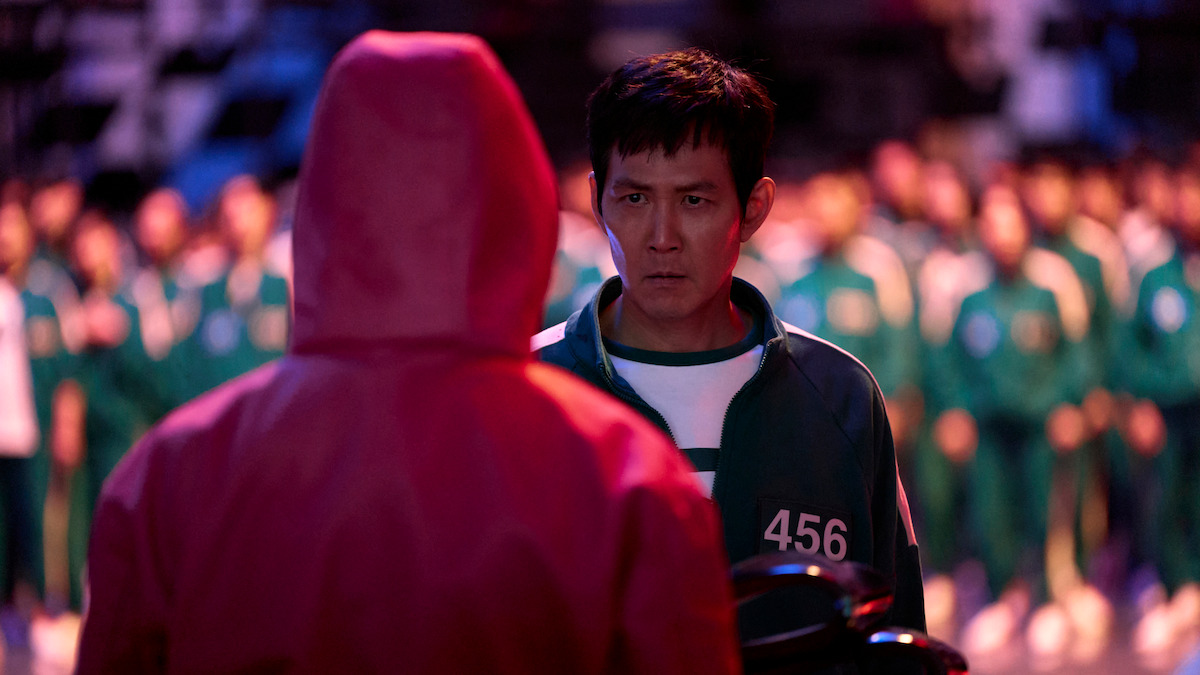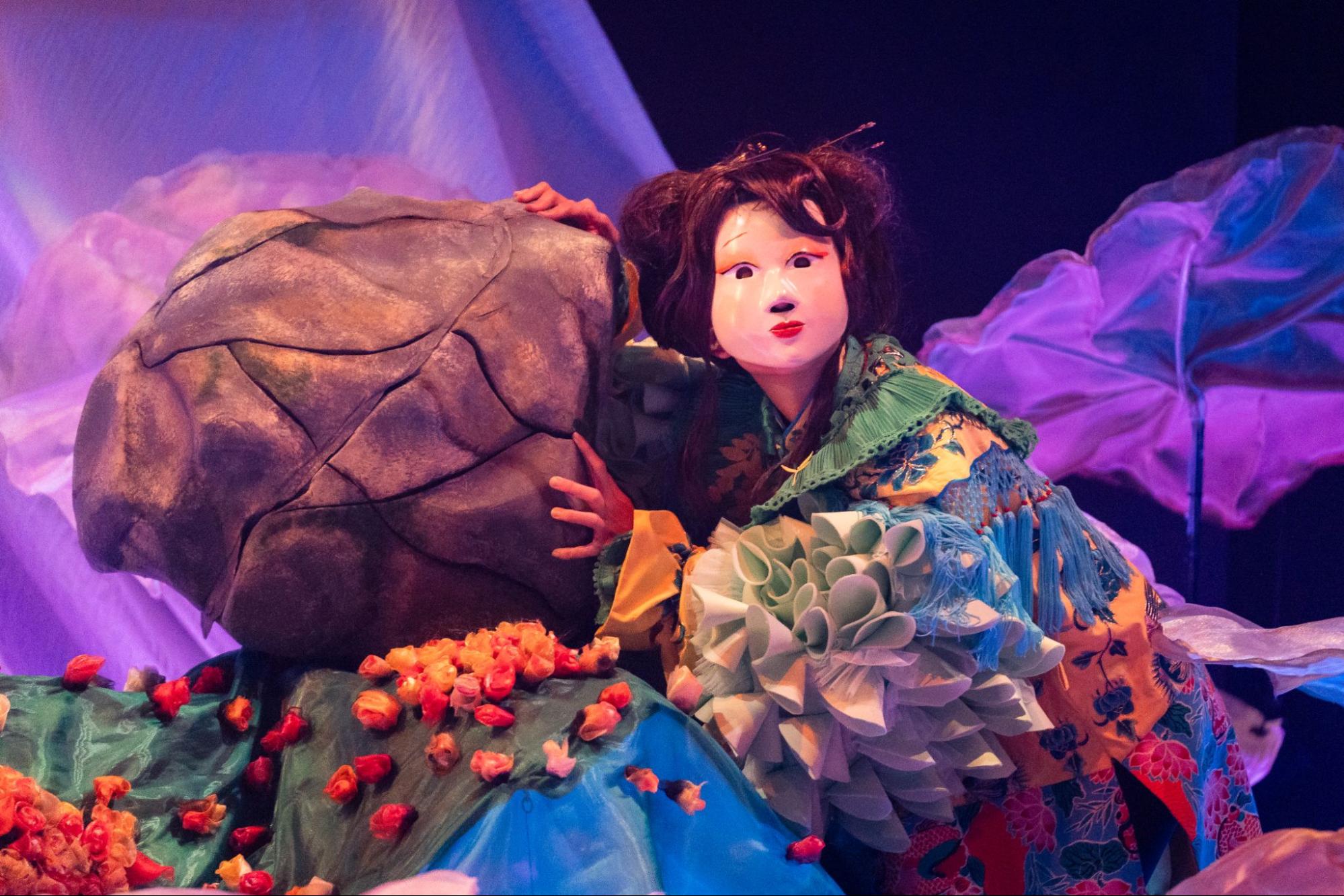
What does it mean to live a good life? This is the central question that the main character of Dream of the Red Chamber, Baoyu, grapples with as he navigates his complicated relationship with love, morality and family. With philosophical themes that transcend the material realm at the heart of the story, The Finger Players’ production of the story felt suitably ethereal and other-worldly.
The story opens with a scene set outside of the parameters of the physical world. A monk, a suicidal priest, and a stone converse about life together. The priest, attempting to drown himself with a stone tied to his neck, laments the challenges of love and life.
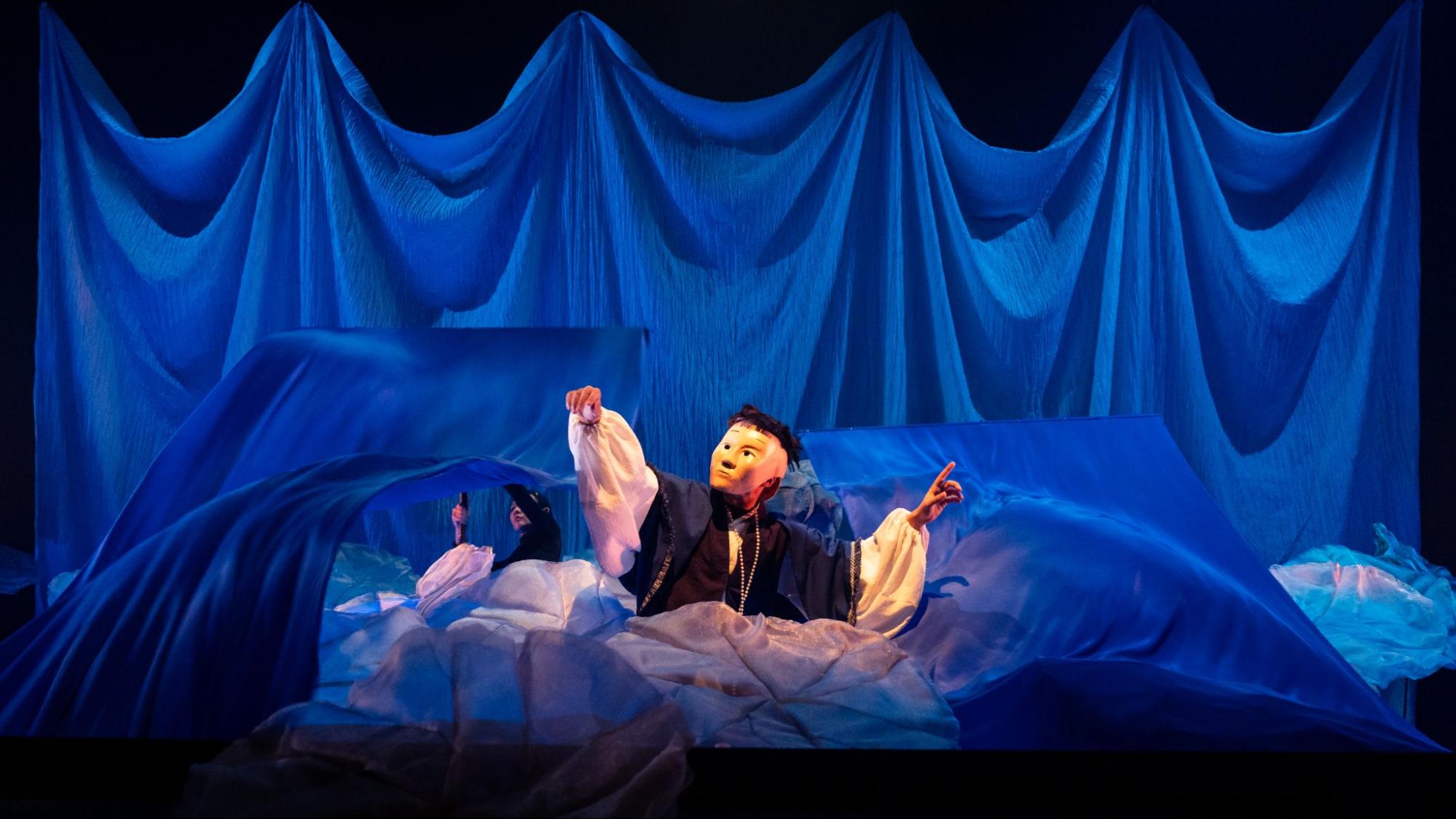
Soft lighting, beautiful lyrical prose, and the puppeteers manoeuvring translucent blue cloth to create gentle waves immerse the audience into a feeling of being suspended in a liminal state of living and dying. The stone’s assertion that he will do better at living a human life than the priest leads to the stone being reincarnated into Baoyu, a boy born into a wealthy corrupt family and the main character of Dream of the Red Chamber. In this way, audiences get to understand what Baoyu’s motives are before he is born.
Award-winning theatre director and playwright Chong Tze Chien’s condensation of the story into key moments leaves one rooting for the protagonist to succeed in his mission to live a meaningful human life. A well-loved classic Chinese tale by Cao Xueqin, Dream of the Red Chamber is a complex story with many twists and turns, and Chong’s rendition is rich with nuance while being relevant and relatable to a modern audience. Notably, the production was performed in English, an artistic choice by Chong to make a multicultural play, drawing inspiration from cultural signifiers from Southeast Asia as well as from the East and West.
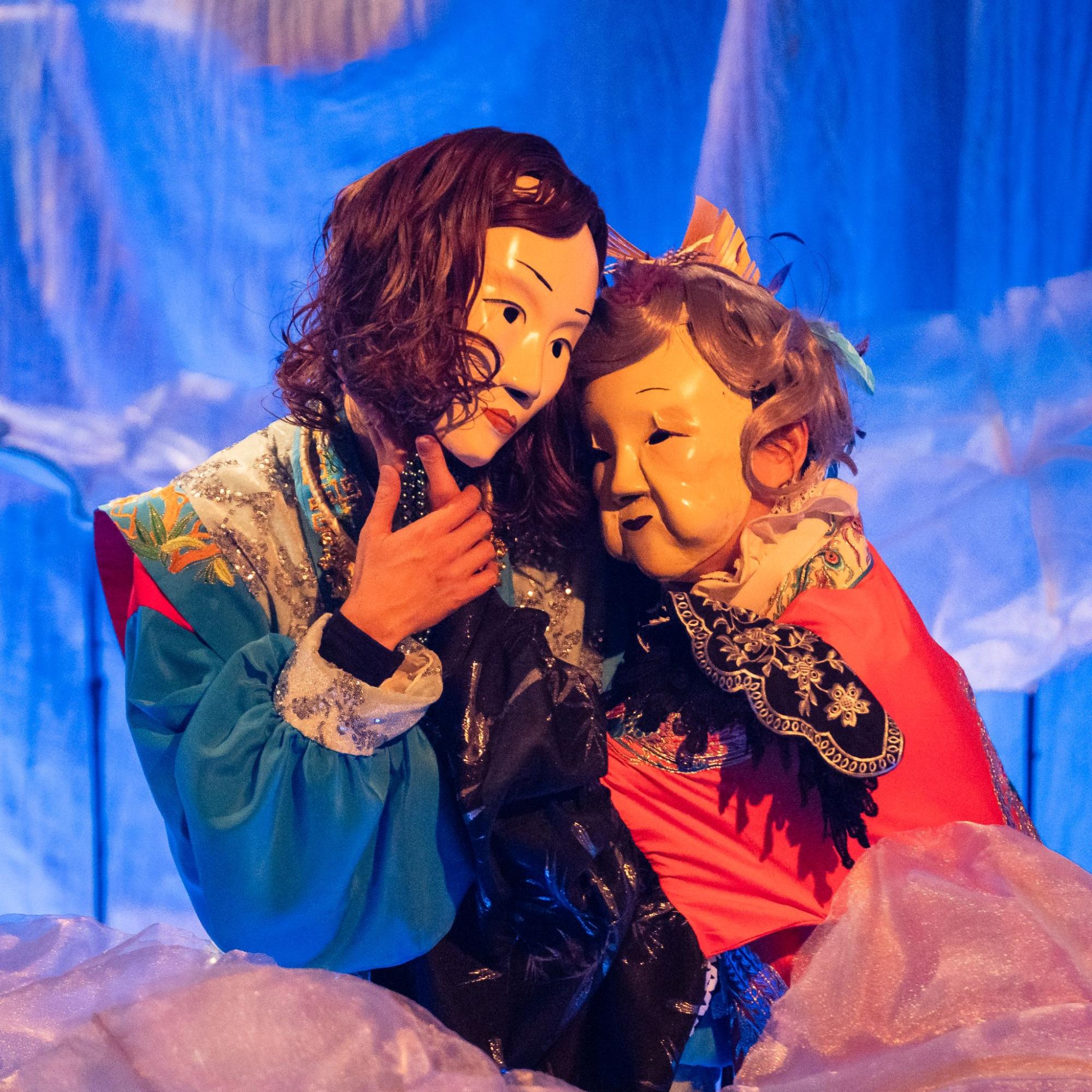
Throughout the fast-paced plot, which includes betrayals, love rivalries, political conflicts, and even deaths, the actors portray their characters with precision and intensity. Each actor has a pre-recorded voiceover that is brimming with emotion, but what really makes the characters come alive are the actors’ movements. Joshua Lim’s bright, energetic movements relay Baoyu’s youthful energy and naivety, while Tan Wan Sze moves with the sharpness and slowness of Baoyu’s grandmother. The relationship between these characters is particularly moving, especially Baoyu’s grandmother and her love for her grandson.
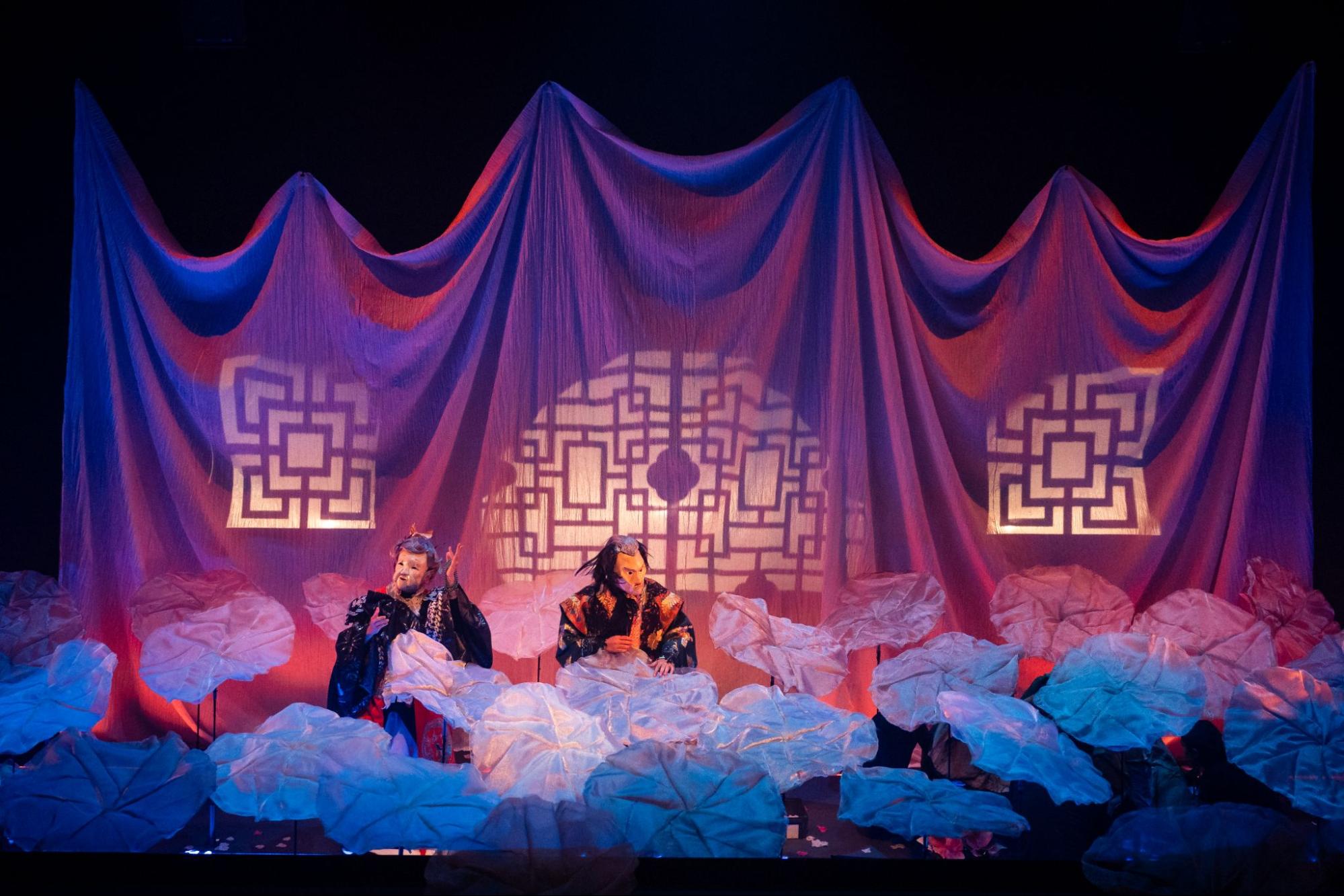
However, it is Baoyu’s relationship with his two cousins that was the centre of the story. Ashie Singh’s character, Daiyu, a young woman with a chronic illness, develops feelings for Baoyu, and Baoyu for her. Singh is able to bring the audience through Daiyu’s development from a cynical, depressed woman to a woman in love and with renewed hope. Ellison Tan’s character, Baochai, on the other hand, spirals from a self-assured wealthy individual into a devastated woman whose love for Baoyu is not being reciprocated. Baochai’s costume, by costume designer Max Tan, is also one of the most striking, with bright greens and blues and playful textures that hinted at Baochai’s status and pride in her individuality. Ellison Tan also plays Xiaoyu, a maid who is also in love with Baoyu; many of the actors double up as multiple characters, with costume changes and an agility that allows them to switch in and out of characters’ mindset with ease.
One of the most unique features of the play is the set designed by Chong and realised by Grace Lin. The stage is covered in tall white, translucent lilies made out of thin cloth, and actors either emerge from below the lilies or manoeuvre their puppets from beneath them.
It is a brilliant way to enhance the magic of the production; in some scenes, one watches several butterfly and flower puppets popping up from below a shimmering sea of silver. Loo An Ni’s beautiful mask designs add to this ethereal quality. Without seeing a human face in the flesh, it becomes easy to forget that the characters are being played by real life actors. The masks have facial expressions delicately etched into them, and each one has a different facial structure. Audiences see this character with their own voice, a gleaming otherworldly face, and unique movements, and the viewing experience becomes incredibly immersive.
With brilliant actors, a lovingly designed set, and delicate writing, The Finger Players’ Dream of the Red Chamber is one of the most unique productions Singapore’s theatre scene has seen in recent times.
Dream of the Red Chamber ran from Jun 20 to 23 at Drama Centre Black Box. For more shows by The Finger Players, visit fingerplayers.com.
Text by Beverly Anne Devakishen. All photos by Poh Yu Khing, courtesy of The Finger Players.


